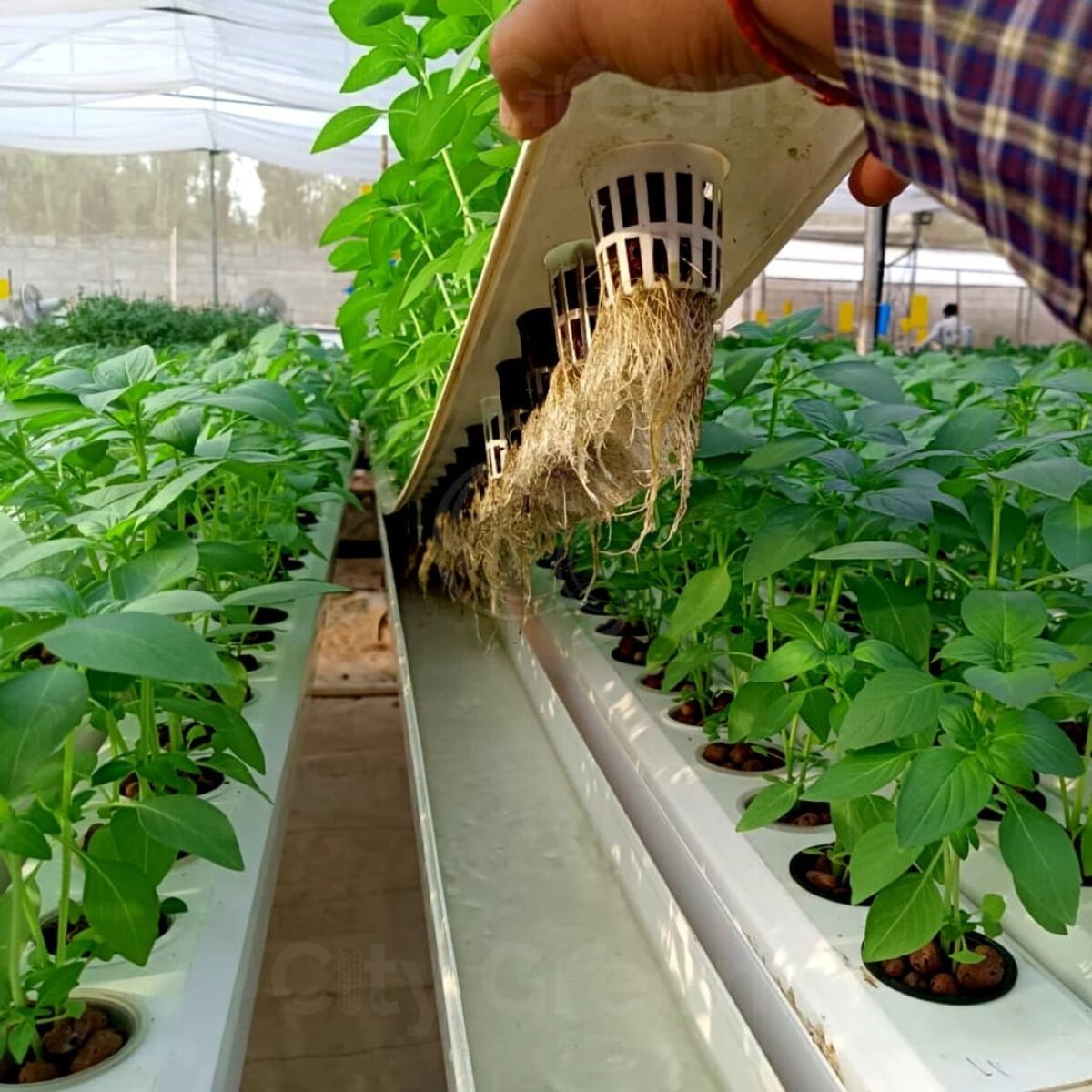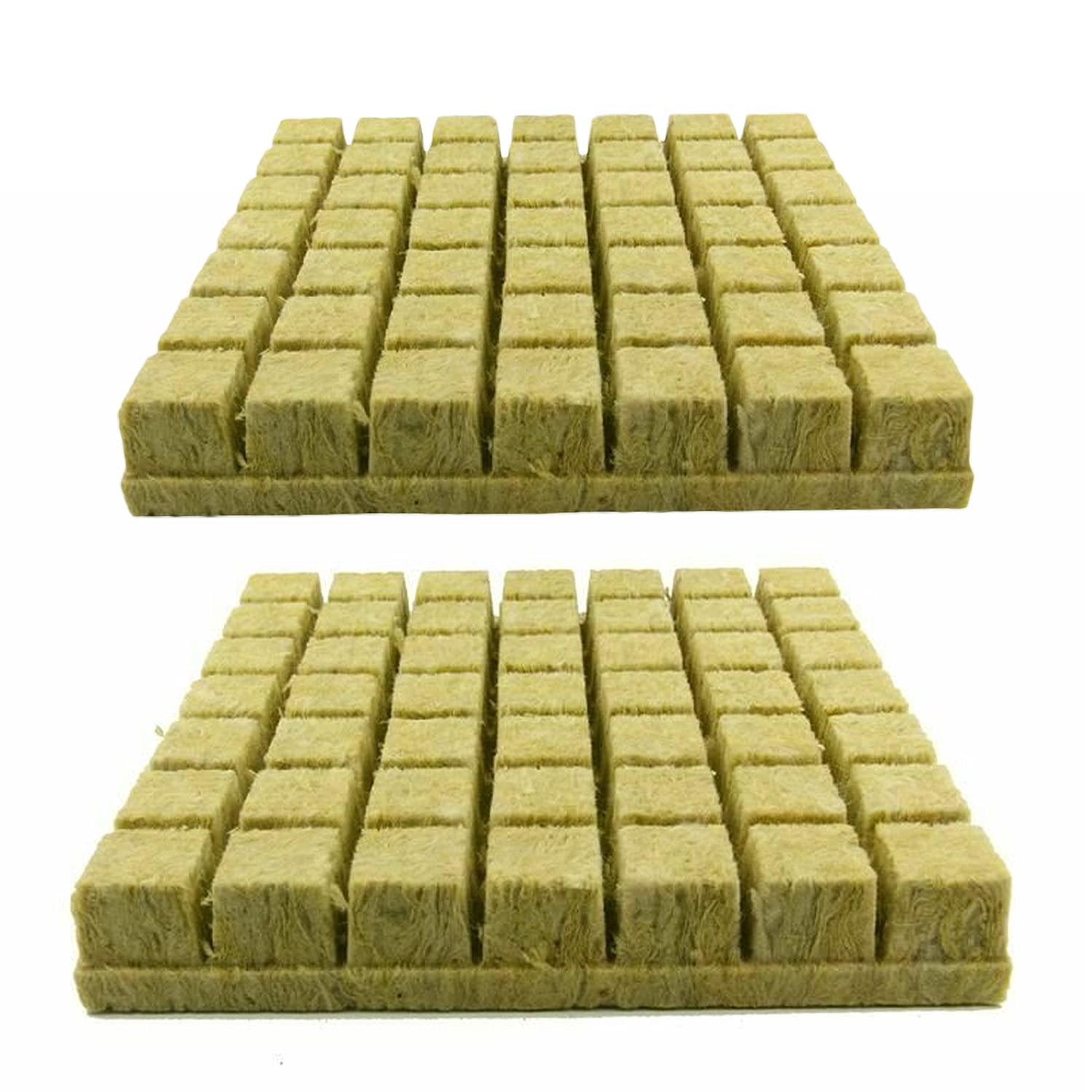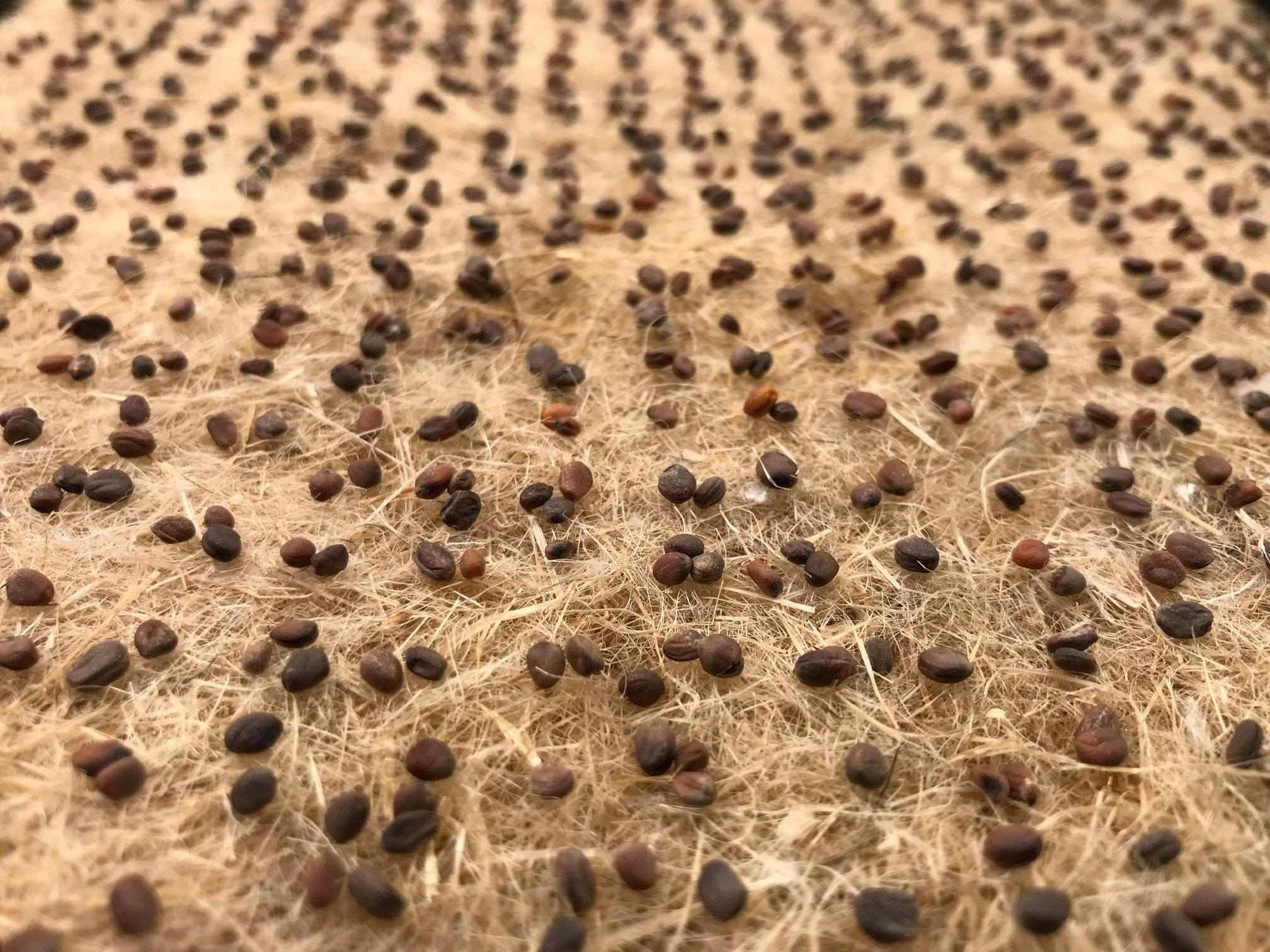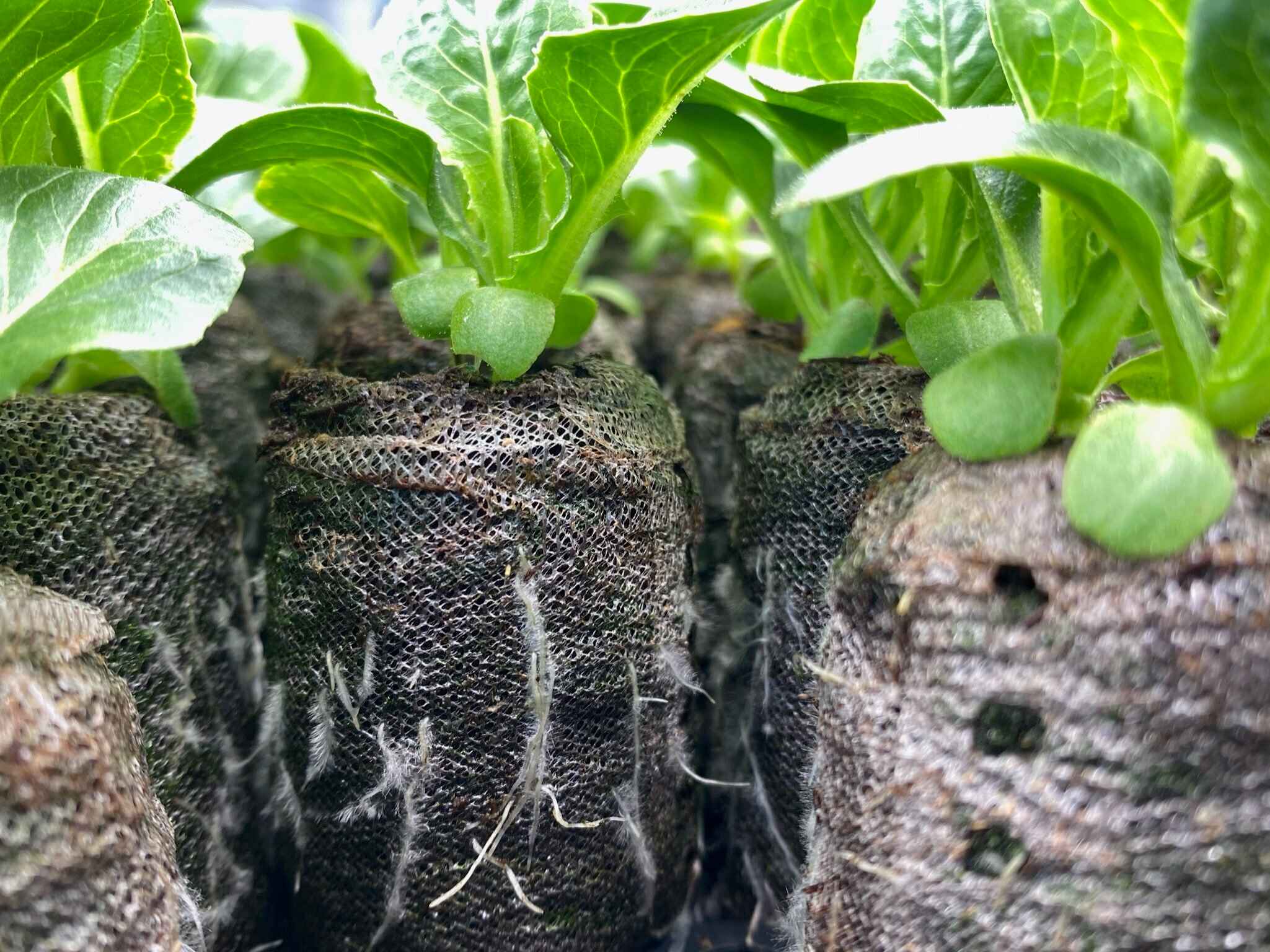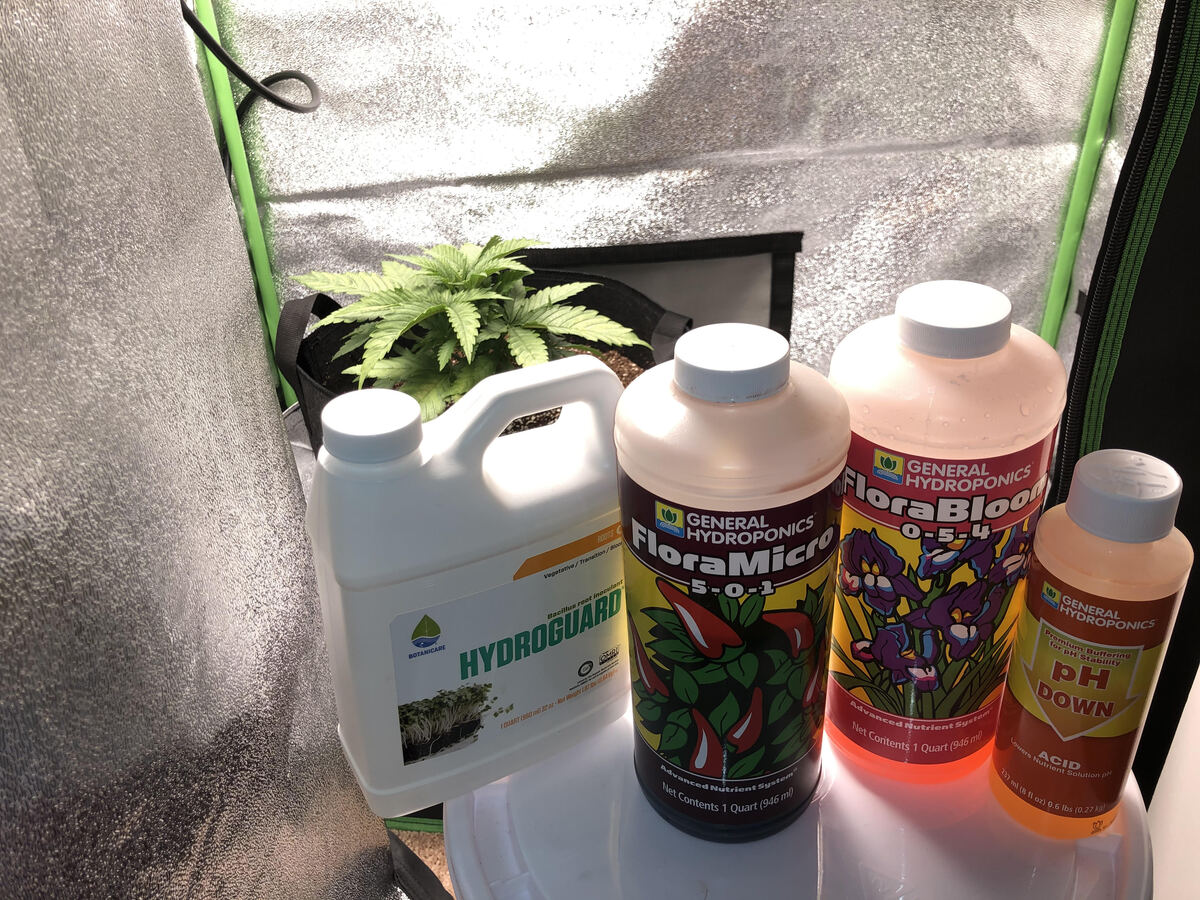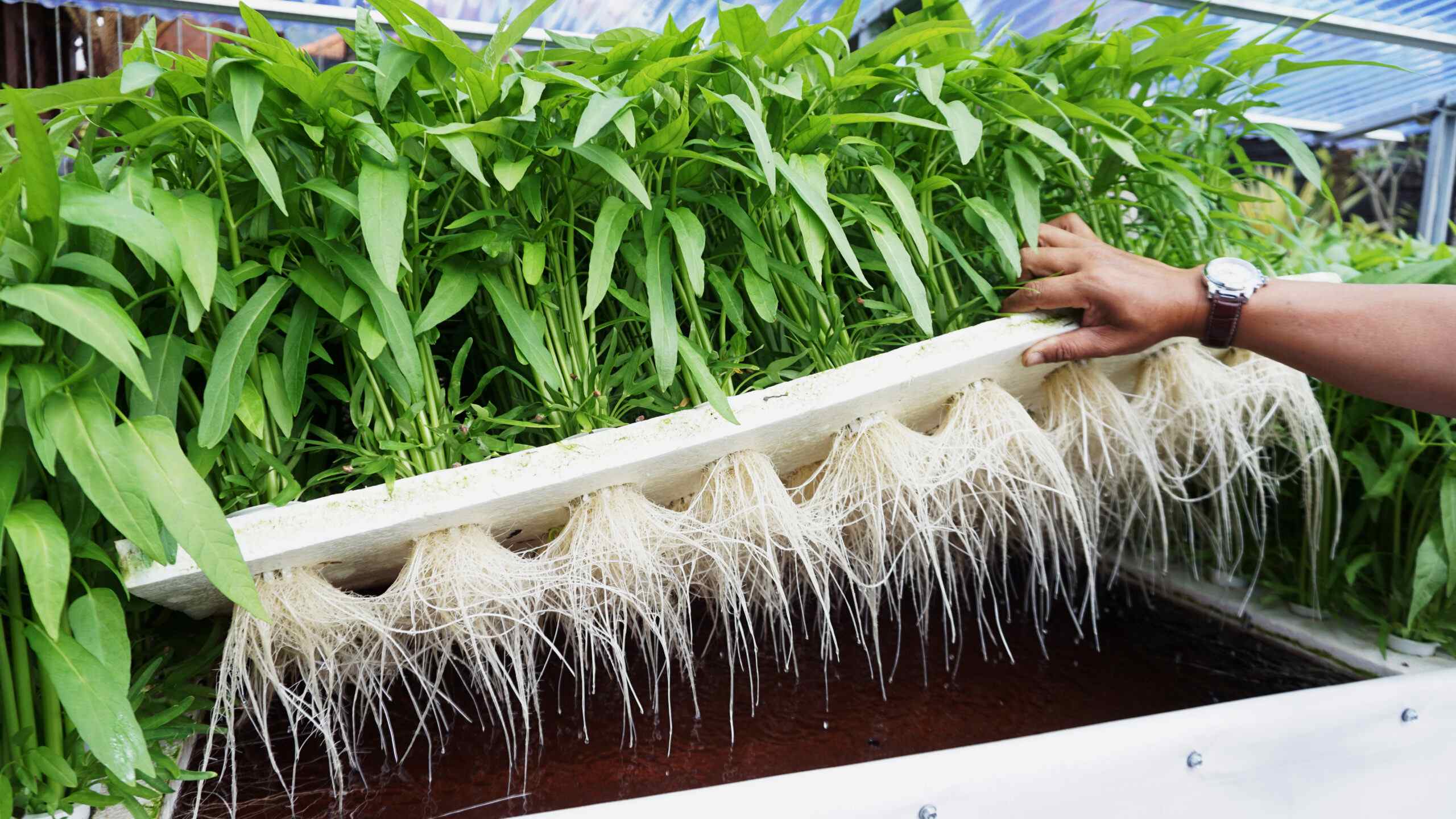Home>Gardening Tips and Tricks>Eco-Friendly Gardening>What Is The Kratky Method Of Hydroponics
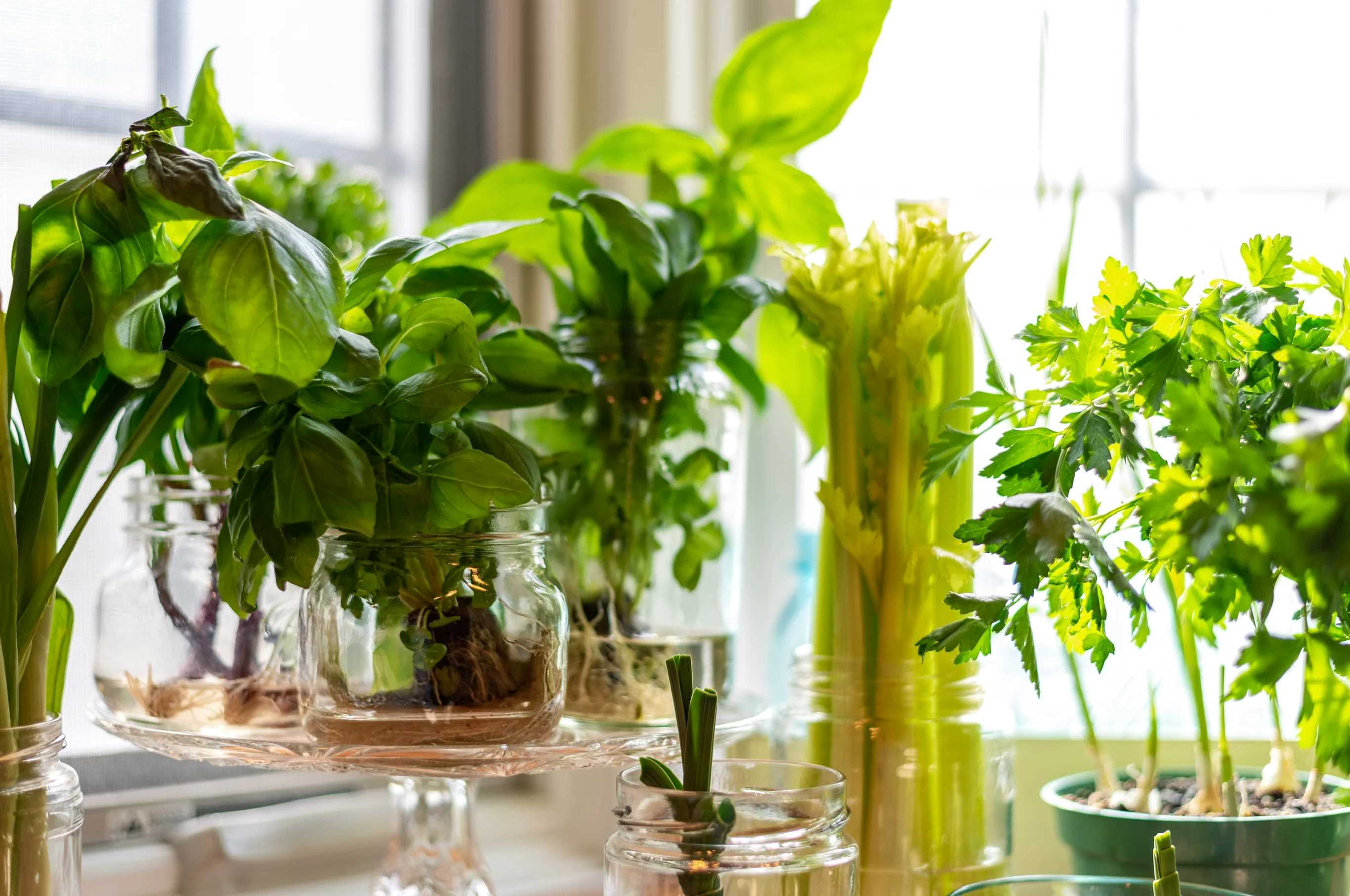

Eco-Friendly Gardening
What Is The Kratky Method Of Hydroponics
Modified: January 22, 2024
Learn about the eco-friendly gardening technique called the Kratky Method of hydroponics and discover how it can revolutionize your home garden.
(Many of the links in this article redirect to a specific reviewed product. Your purchase of these products through affiliate links helps to generate commission for Chicagolandgardening.com, at no extra cost. Learn more)
Table of Contents
- Introduction
- Overview of the Kratky Method
- Advantages of the Kratky Method
- Required Materials for the Kratky Method
- Step-by-Step Guide to Implementing the Kratky Method
- Monitoring and Maintenance of Kratky Hydroponics System
- Common Issues and Troubleshooting in Kratky Hydroponics
- Comparison of the Kratky Method with Other Hydroponic Systems
- Examples of Successful Kratky Method Applications
- Conclusion
Introduction
Welcome to the fascinating world of eco-friendly gardening! In today’s era of climate change and environmental consciousness, more and more people are turning to sustainable gardening practices to reduce their carbon footprint. One such method that has gained popularity in recent years is the Kratky method of hydroponics. This innovative technique allows gardeners to grow bountiful plants without the need for soil or complex nutrient systems.
The Kratky method, named after its creator, Dr. Bernard Kratky, is a simple and low-cost hydroponic system that is ideal for beginners and those with limited space or resources. Unlike traditional hydroponics, which requires pumps, aerators, and regular nutrient replenishment, the Kratky method takes advantage of passive water delivery and a single nutrient solution. This makes it an accessible and efficient way to grow various types of plants, including leafy greens, herbs, and even fruiting plants.
What sets the Kratky method apart is its self-regulating nature. Once set up, the system requires minimal intervention and maintenance. This makes it a great option for busy individuals or those with a less-than-green thumb. Moreover, this method can be used both indoors and outdoors, making it highly versatile and adaptable to different gardening setups.
Throughout this article, we will explore the various aspects of the Kratky method, including its advantages, required materials, step-by-step implementation, maintenance techniques, troubleshooting tips, and even some inspiring success stories. By the end of this guide, you will have a comprehensive understanding of how to apply the Kratky method to your own eco-friendly gardening journey.
Overview of the Kratky Method
The Kratky method is a passive hydroponic system that allows plants to grow without the need for electricity, pumps, or complicated nutrient delivery systems. It is a subcategory of the larger hydroponics technique, which involves growing plants in water rather than soil. What makes the Kratky method unique is its simplicity and low cost.
In a typical Kratky system, plants are placed in containers filled with a hydroponic nutrient solution. The containers have no outlets or drainage systems, and the water level gradually decreases as the plants absorb it. The roots are suspended above the water level, allowing them to receive ample oxygen. This combination of nutrient-rich water and air creates an ideal growing environment, promoting healthy growth and development.
One of the key characteristics of the Kratky method is the concept of nutrient solution depth. As the water level decreases, the roots grow longer and start to reach the nutrient-rich solution. This process, known as “aerial root growth,” allows plants to access nutrients while still receiving oxygen from the air. This self-watering and self-feeding mechanism is what sets the Kratky method apart from other hydroponic systems.
Another advantage of the Kratky method is its simplicity and low maintenance. Once the initial setup is complete, the system operates autonomously. There is no need for monitoring or adjusting the water levels, as the plants will naturally consume the water and nutrients as needed. This hands-off approach makes it an excellent choice for beginners or those who prefer a more hands-free gardening experience.
It is important to note that the Kratky method is best suited for growing plants with shorter growth cycles, such as leafy greens and herbs. This is because the water level in the container cannot be replenished, and certain fruiting plants may require more nutrients and water over longer periods. However, with proper planning and attention to plant selection, it is still possible to grow a variety of plants using the Kratky method.
Now that we have an overview of the Kratky method, let’s delve deeper into its advantages, required materials, and step-by-step implementation. By doing so, you will gain a comprehensive understanding of how to adopt this eco-friendly gardening technique and reap its numerous benefits.
Advantages of the Kratky Method
The Kratky method of hydroponics offers several advantages that make it an enticing option for eco-conscious gardeners. Let’s explore some of these key benefits:
- Low cost: One of the major advantages of the Kratky method is its affordability. Unlike traditional hydroponic systems that require pumps, timers, and complex nutrient solutions, the Kratky method only requires a container, nutrient solution, and growing media. This makes it a cost-effective option, especially for beginners or those on a tight budget.
- Simplicity: The Kratky method is incredibly simple to set up and maintain. There is no need for electricity, timers, or water pumps. Once the containers are filled and the plants are positioned, the system operates on its own. This makes it an attractive choice for busy individuals or those who prefer a hands-off gardening approach.
- Water conservation: As the Kratky method uses a static water system, it is highly water-efficient. There is no water wastage through drainage or evaporation, and the water level gradually decreases as the plants consume it. This is particularly beneficial in areas with limited water resources or during dry seasons.
- Reduced environmental impact: By eliminating the need for soil and reducing water usage, the Kratky method has a minimal environmental impact. Additionally, since no chemical pesticides or herbicides are used, it promotes organic gardening practices and reduces the risk of contaminating the surrounding environment.
- Versatility: While the Kratky method is best suited for growing leafy greens and herbs with shorter growth cycles, it is still adaptable to a wide range of plants. With careful planning and selection, it is possible to grow various fruiting plants and even flowers using this technique. It offers flexibility and the opportunity to grow your favorite plants hydroponically.
- Space-saving: The Kratky method is ideal for small spaces, both indoors and outdoors. It eliminates the need for bulky containers of soil and allows plants to grow vertically. This makes it a great option for urban gardeners, apartment dwellers, or anyone with limited gardening space.
These advantages make the Kratky method an excellent choice for those seeking a cost-effective, low-maintenance, and environmentally friendly way to grow their own food or beautify their surroundings. Now that we understand the benefits of the Kratky method, let’s proceed to explore the materials required for setting up this hydroponic system.
Required Materials for the Kratky Method
To implement the Kratky method of hydroponics, you will need the following materials:
- Container: Select a container that can hold an adequate amount of water for your plants. It should be made of a non-toxic material such as food-grade plastic or glass. The size of the container will depend on the number and size of plants you wish to grow. Ensure that the container has a lid to reduce evaporation and protect the nutrient solution from contamination.
- Net pots or cups: These are special pots or cups that allow the roots of your plants to grow through them and into the nutrient solution. They are usually made of plastic or mesh and are available in various sizes to accommodate different plant types.
- Growing medium: While the Kratky method doesn’t require traditional soil, a growing medium is needed to support the plants’ roots. Common options include coconut coir, perlite, vermiculite, or Rockwool cubes. These materials provide stability for the plants and help retain moisture around the roots.
- Hydroponic nutrient solution: This is a vital component of the Kratky method. It provides the necessary nutrients for the plants to thrive. Commercially available hydroponic nutrient solutions are formulated to meet the specific needs of plants in soil-less systems. Be sure to choose a balanced solution that includes essential macro and micronutrients.
- pH testing kit: It is crucial to monitor and maintain the pH level of the nutrient solution to ensure optimal nutrient uptake. A pH testing kit will help you adjust the acidity or alkalinity of the solution if necessary. The ideal pH range for most plants in hydroponics is between 5.5 and 6.5.
- Water: Fill the container with enough water to immerse the bottom of the net pots or cups. Ideally, use filtered or distilled water to minimize mineral build-up in the system. If tap water is the only option, let it sit for 24 hours to allow any chlorine to evaporate.
- Optional accessories: Depending on your setup, you may need additional equipment such as grow lights for indoor gardening, trellises or stakes for supporting tall plants, and a water level indicator to monitor the decreasing water level in the container.
These materials will provide you with the basics needed to start your Kratky hydroponic system. Remember to choose high-quality materials to ensure the success and longevity of your setup. In the next section, we will explore the step-by-step process of implementing the Kratky method in your gardening practice.
Step-by-Step Guide to Implementing the Kratky Method
Implementing the Kratky method of hydroponics is a straightforward process that can be done by following these steps:
- Select a container: Choose a container that is suitable for your plants and has a lid. Ensure it is clean and free from any contaminants.
- Prepare the net pots or cups: Place the net pots or cups into the container. Ensure they are secure and at a height that allows the roots to hang into the nutrient solution below.
- Add the growing medium: Fill each net pot or cup with the chosen growing medium. Gently press it down to secure the plant in place.
- Mix the hydroponic nutrient solution: Follow the instructions provided with your chosen nutrient solution to mix it with water. Adjust the pH of the solution if necessary.
- Fill the container: Pour the prepared nutrient solution into the container, ensuring that the bottom of the net pots or cups are submerged. Take note of the initial water level.
- Plant your chosen plants: Carefully transfer your seedlings or young plants into the net pots or cups, making sure they are positioned securely in the growing medium.
- Place the lid: Seal the container with the lid to prevent evaporation and protect the nutrient solution from contamination.
- Position the container: Place the container in a suitable location that receives adequate sunlight or provide artificial lighting if growing indoors. Ensure the temperature and humidity levels are suitable for your chosen plants.
- Monitor the water level: As the plants grow, their roots will gradually reach the nutrient solution. Over time, the water level will decrease. It is important to monitor and maintain the water level, ensuring the roots remain suspended above the solution.
- Check the pH and nutrient levels: Regularly test the pH level of the nutrient solution and adjust it if necessary. Keep an eye on the nutrient levels and top up the solution when needed.
- Harvest and enjoy: As the plants mature, harvest the desired parts and enjoy the fruits of your labor. Be sure to clean and disinfect the container before starting another round of Kratky hydroponics.
By following these steps, you can successfully implement the Kratky method and begin your journey towards eco-friendly gardening and sustainable plant growth. In the next section, we will explore the monitoring and maintenance required to keep your Kratky hydroponic system in optimal condition.
Monitoring and Maintenance of Kratky Hydroponics System
While the Kratky method of hydroponics is known for its simplicity and low maintenance, there are still a few key aspects to monitor and maintain to ensure the success of your system:
- Water level: Regularly check the water level in the container. As the plants consume the water, the level will gradually decrease. It is important to ensure that the roots remain suspended above the nutrient solution. If the water level drops too low, add more prepared nutrient solution to maintain the appropriate level.
- pH level: The pH level of the nutrient solution affects the plant’s ability to absorb essential nutrients. Use a pH testing kit to monitor the pH regularly. The ideal range for most plants is between 5.5 and 6.5. Adjust the pH if necessary using pH up or pH down solutions, following the manufacturer’s instructions.
- Nutrient solution: Keep an eye on the nutrient levels in the solution. Over time, the plants will consume the nutrients, and it may be necessary to top up the solution with fresh nutrient mix. Follow the instructions provided with your chosen nutrient solution to ensure the correct strength and composition.
- Cleaning and maintenance: Regularly clean the container, net pots or cups, and lid to prevent the buildup of algae or bacteria. Use a mild solution of hydrogen peroxide or bleach to disinfect the equipment. This will help maintain a healthy and hygienic growing environment for your plants.
- Light exposure: Ensure that your plants receive adequate light exposure. If growing indoors, provide artificial lighting such as grow lights to supplement natural light. Monitor the light intensity and duration according to the specific light requirements of your plants.
- Inspecting for pests and diseases: Regularly check your plants for any signs of pests or diseases. If you notice any issues, take appropriate action immediately to prevent the spread and protect the health of your plants. Use organic methods such as neem oil or insecticidal soap to control pests, if necessary.
By regularly monitoring these aspects and performing necessary maintenance, you can ensure the continued health and productivity of your Kratky hydroponics system. Now that we have covered the monitoring and maintenance of the system, let’s address common issues and troubleshooting tips specific to the Kratky method in the next section.
Common Issues and Troubleshooting in Kratky Hydroponics
While the Kratky method of hydroponics is generally a straightforward and low-maintenance system, like any gardening method, it can encounter certain issues. Here are some common problems that may arise and troubleshooting tips to address them:
- Algae growth: If you notice green algae growing in your nutrient solution or on the surface of the growing medium, it may be due to excessive exposure to light. To prevent algae growth, minimize light exposure by covering the container with an opaque material or using a light-blocking lid.
- Root rot: Root rot can occur if the roots are constantly submerged in stagnant water. This can happen if the water level in the container is not maintained properly. To prevent root rot, ensure that the roots are suspended above the nutrient solution and avoid overfilling the container.
- pH imbalance: A pH imbalance can hinder nutrient uptake and affect plant growth. If you notice stunted growth or yellowing leaves, check the pH of the nutrient solution. Adjust it using pH up or pH down solutions to achieve the ideal pH range for your plants.
- Insufficient nutrients: If your plants are showing signs of nutrient deficiencies, such as pale leaves or slow growth, it may be due to insufficient nutrients in the solution. Check the nutrient levels and top up the solution with fresh nutrient mix following the instructions provided by the manufacturer.
- Overwatering: Overwatering can lead to oxygen deprivation for the roots and result in wilting or root rot. Ensure that the water level is maintained appropriately, with the roots suspended above the solution. Avoid adding excessive water or allowing the water level to reach the bottom of the net pots.
- Temperature extremes: Extreme temperatures can affect plant growth and health. Avoid placing the container in areas with excessive heat or cold drafts. Keep the temperature within the optimal range for your plants, typically between 65°F and 80°F (18°C and 27°C).
- Plant overcrowding: If you notice plants growing too close together and competing for resources, it may lead to stunted growth. To prevent overcrowding, ensure proper spacing between plants and limit the number of plants in each container to allow for adequate air circulation.
By being aware of these common issues and having the necessary troubleshooting knowledge, you can address them promptly and maintain a healthy Kratky hydroponics system. In the next section, we will compare the Kratky method with other hydroponic systems to help you make an informed decision about which approach is best suited for your gardening needs.
Comparison of the Kratky Method with Other Hydroponic Systems
When it comes to hydroponics, there are various methods available, each with its own advantages and considerations. Let’s compare the Kratky method with other common hydroponic systems:
- Nutrient Film Technique (NFT): NFT is a popular hydroponic system where a thin film of nutrient-rich water continuously flows over the roots, providing a constant supply of nutrients. Unlike the Kratky method, NFT requires an active water pump and regular nutrient solution circulation. NFT is better suited for larger plants with longer growth cycles and is commonly used for growing vine-type crops.
- Deep Water Culture (DWC): DWC involves suspending the plant roots directly in a nutrient solution, with an aerator providing oxygen to the roots. Like the Kratky method, it is a passive system that does not require a water pump. However, DWC requires more space and maintenance to monitor and adjust nutrient levels. It is suitable for larger plants and longer growth cycles.
- Vertical Tower Systems: Vertical tower systems, also known as aeroponic systems, grow plants vertically, with nutrient-rich mist sprayed onto the roots. These systems require electricity, as they use a pump to create the mist. Vertical tower systems are space-efficient and can grow a wide variety of plants. However, they require more maintenance, monitoring, and a higher investment compared to the Kratky method.
- Drip Irrigation Systems: Drip irrigation systems involve supplying nutrient solution through tubes or drippers to individual plants. This method allows for precise control over nutrient delivery and is more suitable for larger-scale operations. Drip systems require regular maintenance and monitoring of nutrient levels and pH. They are versatile and can be used for a variety of plants with different growth cycles.
When comparing the Kratky method with other hydroponic systems, it is clear that the Kratky method offers simplicity, low cost, and low maintenance. It is well-suited for beginners, those with limited resources or space, and those who prefer a hands-off approach to gardening. The Kratky method is particularly effective for growing smaller plants with shorter growth cycles, such as leafy greens and herbs.
While other hydroponic systems may offer more flexibility and control, they also require more investment, maintenance, and monitoring. They are better suited for larger-scale operations or for growing plants with longer growth cycles.
By understanding the differences and considering your specific needs and preferences, you can choose the hydroponic system that best aligns with your goals and resources. Now, let’s explore some inspiring success stories of the Kratky method in action.
Examples of Successful Kratky Method Applications
The Kratky method of hydroponics has been embraced by gardeners around the world, leading to numerous success stories. Here are a few inspiring examples of successful Kratky method applications:
- Urban balcony gardens: The Kratky method is particularly popular among urban gardeners with limited space. People living in apartments or condos with small balconies have successfully implemented this method to grow their own fresh produce. Leafy greens like lettuce, spinach, and kale, as well as aromatic herbs like basil and parsley, are commonly grown in these urban balcony gardens.
- Community gardens: The simplicity and low cost of the Kratky method have made it a favorite in community gardens. These gardens, often run by neighborhoods or organizations, aim to provide healthy and sustainable food options to the local community. The Kratky method’s accessibility and low maintenance requirements make it ideal for community garden initiatives.
- Classroom projects: The Kratky method has gained popularity in educational settings, especially in schools. Many teachers incorporate hydroponic gardening into their science curriculum, allowing students to learn about plant growth, nutrition, and sustainability. The low-cost and simplicity of the Kratky method make it an excellent choice for classroom-based projects that engage and educate students.
- Restaurant and café gardens: Increasingly, restaurants and cafes are adopting the Kratky method to grow herbs and small leafy greens for use in their kitchens. By having their own hydroponic gardens, these establishments ensure a fresh and continuous supply of ingredients, reducing their reliance on external suppliers and promoting sustainable practices.
- Personal home gardens: Many individuals have embraced the Kratky method to establish their own personal home gardens. This allows them to have control over the quality and freshness of their produce, create a greener living space, and enjoy the therapeutic benefits of gardening. The Kratky method’s simplicity and minimal maintenance make it accessible for busy homeowners or those with limited gardening experience.
These examples demonstrate the versatility and adaptability of the Kratky method in various settings, from urban environments to educational institutions and personal homes. Whether it’s providing fresh produce for personal consumption or contributing to community-driven initiatives, the Kratky method has proven to be a successful and sustainable approach to hydroponic gardening.
Now that we’ve explored these inspiring success stories, you have an understanding of the extensive applications and benefits of the Kratky method. In the concluding section, we’ll summarize the key points covered in this article and encourage you to embark on your eco-friendly gardening journey with the Kratky method.
Conclusion
The Kratky method offers an accessible and eco-friendly approach to hydroponic gardening. With its simplicity, low cost, and low maintenance requirements, it has gained popularity among urban gardeners, schools, community initiatives, and individuals looking to grow their own fresh produce.
By implementing the Kratky method, you can enjoy the benefits of growing plants without the need for soil or complex nutrient systems. The passive water delivery system and self-regulating nature of the method make it a hassle-free option, especially for beginners or those with limited time and resources.
The Kratky method is versatile, allowing you to grow a variety of plants, particularly smaller ones with shorter growth cycles like leafy greens and herbs. It is highly adaptable to different environments, whether you have a small urban balcony or a spacious backyard.
Throughout this article, we have covered the overview of the Kratky method, its advantages, required materials, step-by-step implementation, monitoring and maintenance tips, common issues and troubleshooting, and inspiring success stories. Armed with this knowledge, you are well-equipped to embark on your own eco-friendly gardening journey using the Kratky method.
So, why not give it a try? Start small and gradually expand as you gain experience and confidence. Join the growing community of eco-conscious gardeners who are embracing sustainable gardening practices and enjoying the rewards of growing their own fresh and nutritious food.
Remember, the Kratky method is not only a means to grow plants—it is an opportunity to connect with nature, promote sustainability, and foster a healthier planet. Happy gardening!
